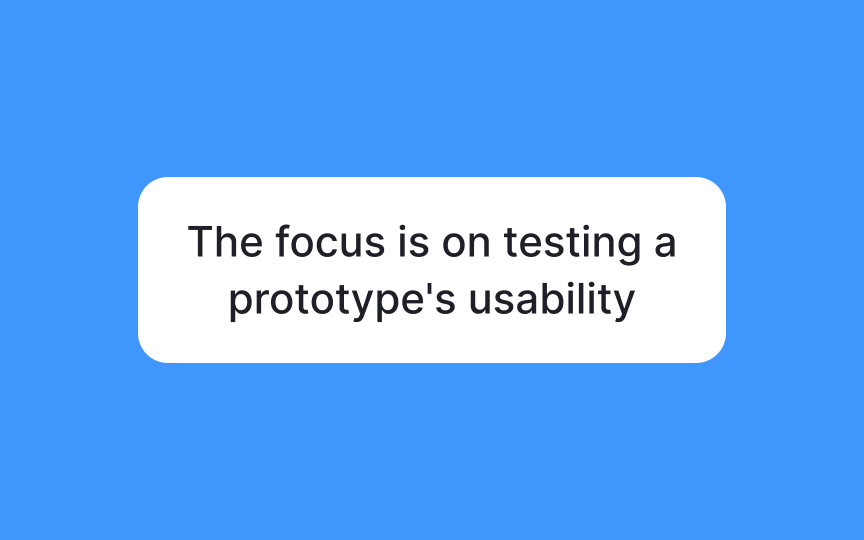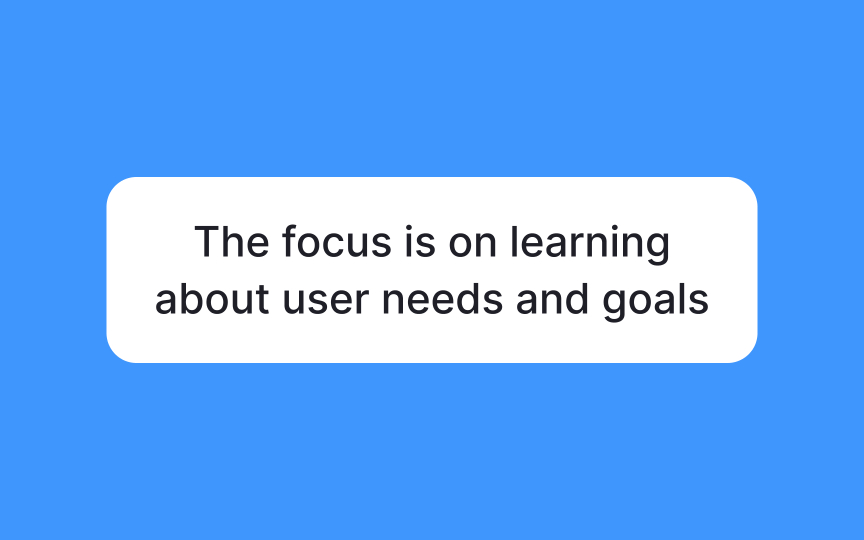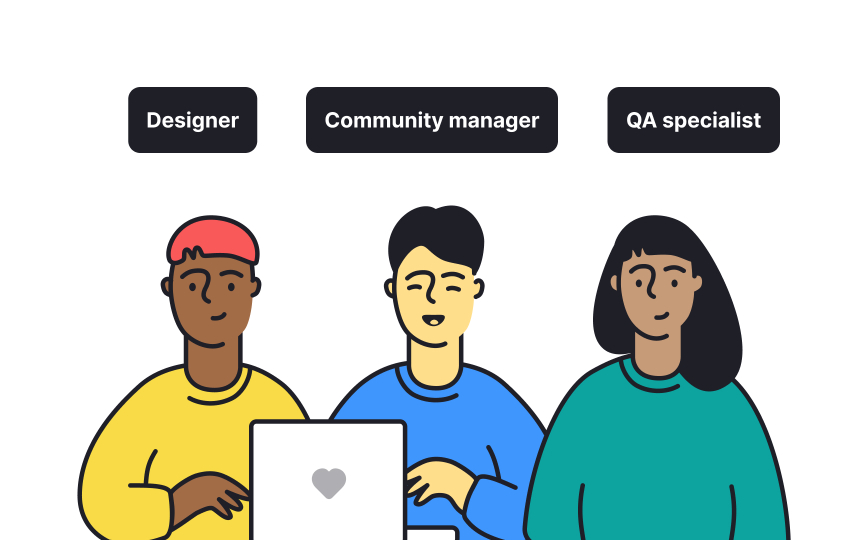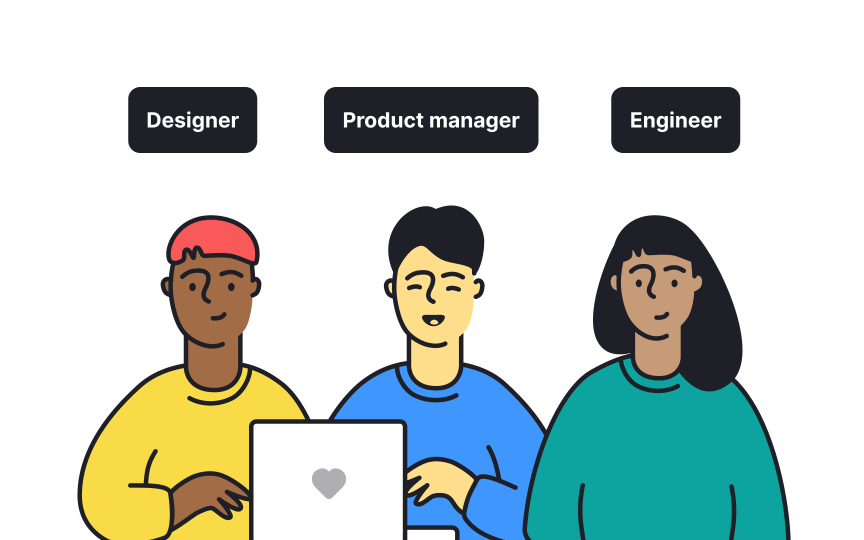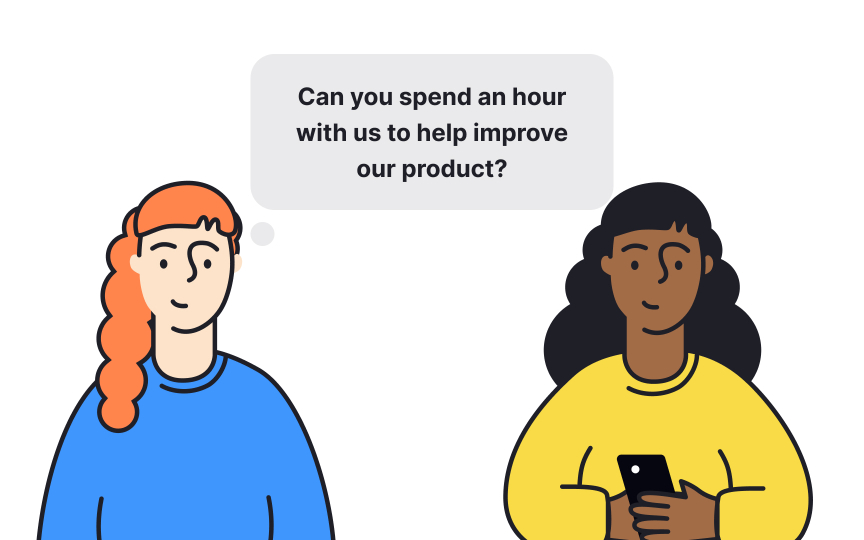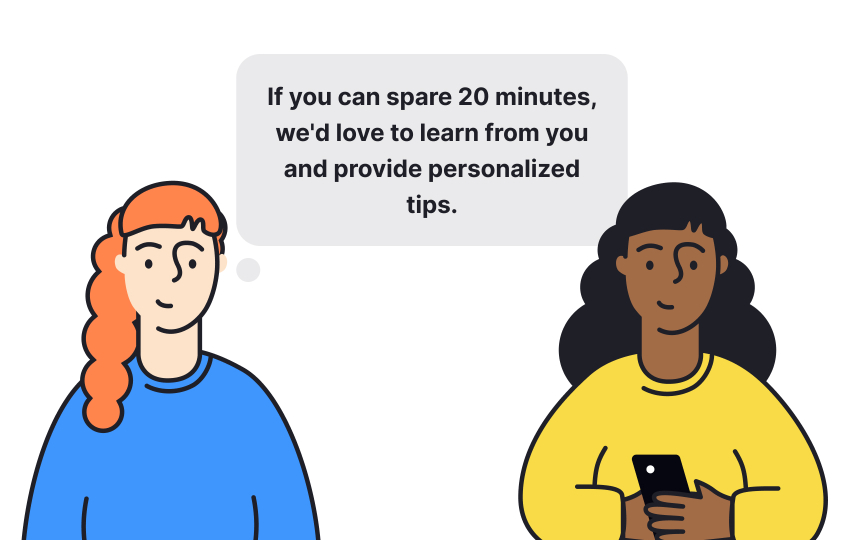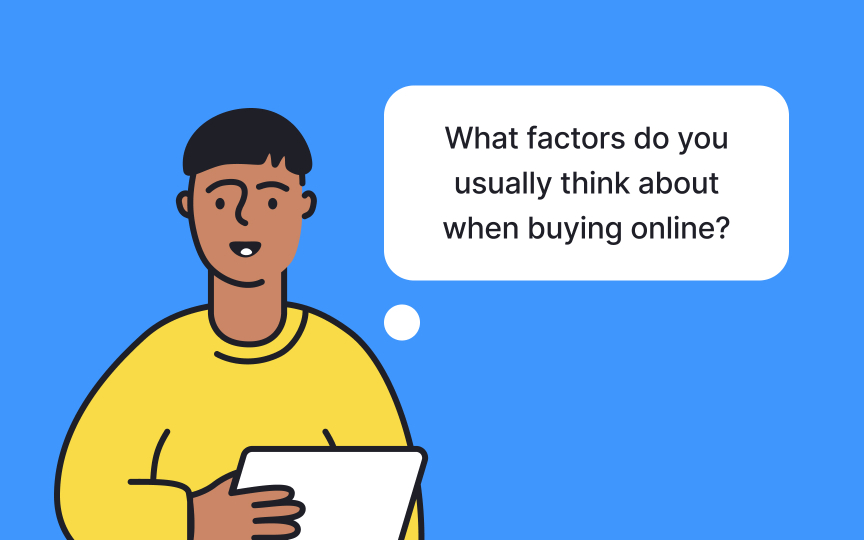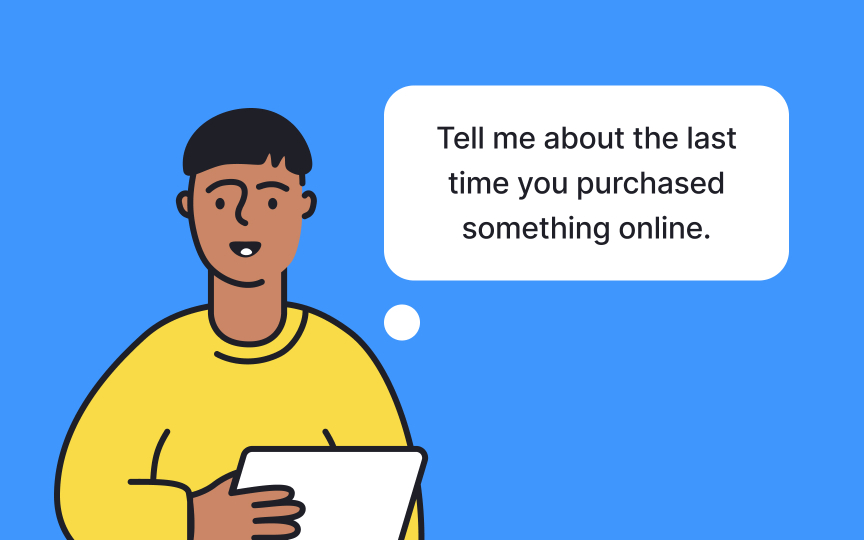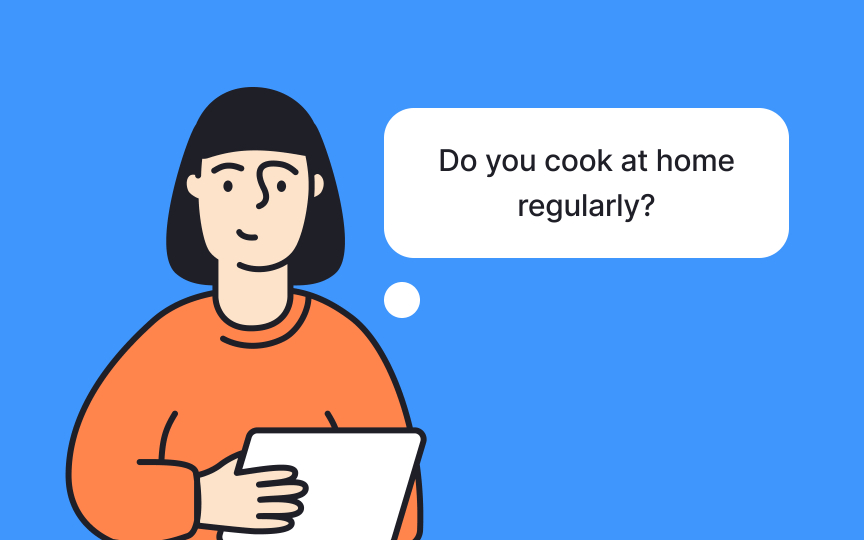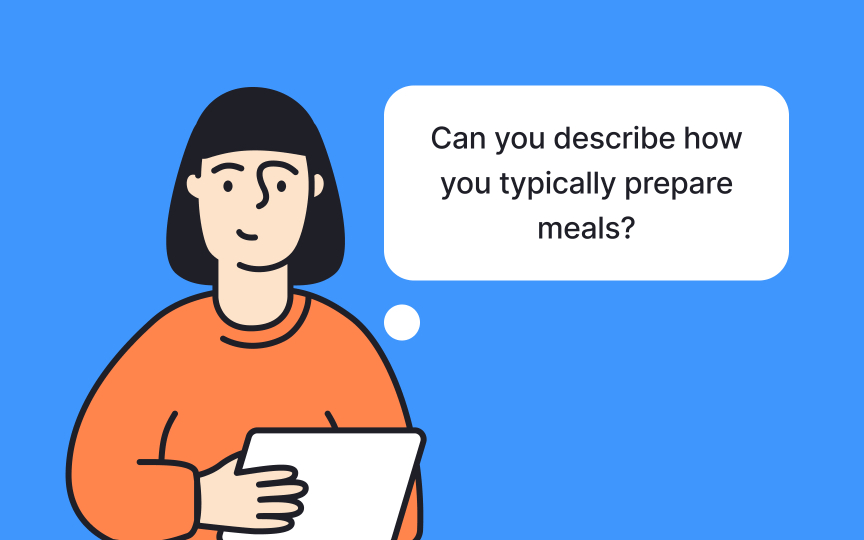Customer Interviews
Learn how to prepare interviews and ask the right questions to uncover real user experiences and design better products
Conducting customer interviews isn’t just about gathering information— it’s about gathering the right information. If you simply collect facts or hear what users think they should do, you miss the deeper insights into real behavior. A good interviewer is prepared, focused, and knows how to steer the conversation toward specific past experiences. Instead of letting users talk about what they intend to do or wish they did, guide them to share concrete stories about their actual actions. This approach helps uncover genuine pain points and needs. Without this focus, interviews can become misleading, filled with idealized responses that don’t reflect real user behavior.
Customer
The main purpose of customer interviews is to uncover opportunities — things like unmet needs, pain points, or desires —that can guide product improvements. Instead of guessing what will work, teams use these interviews to find out what matters most to users.
In continuous discovery, these interviews are ongoing, helping teams stay aligned with user needs as they evolve.
Customer
What customer interviews are not:
- Usability tests or prototype tests: These focus on how users interact with a specific product or solution, evaluating its usability, rather than exploring broader user needs or goals. They are valuable but do not dig into the customer's motivations or pain points like customer interviews do.
- Sales conversations: The intent here is to close a deal or renew business. These conversations are sales-driven, aiming for a transaction, rather than understanding user challenges and needs.
- Support conversations: These interactions are about solving a customer's specific problem or complaint. While they are important for customer satisfaction, they are reactive and focus on resolving immediate issues, not on understanding the broader context of user needs.[1]
When conducting customer interviews, it's important to focus on the right group of people, which will depend on your product and its target audience.
Who to
- Subscription products (e.g. Spotify, Adobe Creative Cloud): Interview both active and inactive customers, as well as those who recently canceled their subscriptions. This helps capture insights from users at various stages of the customer lifecycle.
- B2B products (e.g. Salesforce, Slack): Interview both decision-makers (customers) and end-users. For small teams, it's important to cover both groups, while larger companies might split responsibilities between teams that focus on each.
- B2B2C products (e.g. Shopify, UberEats): Interview a mix of business customers (e.g., restaurant owners or store owners), business users (e.g., staff using the platform), and end-consumers (e.g., shoppers or food delivery customers). As companies grow, teams may specialize in these different user groups.
- Two-sided marketplaces (e.g. Airbnb, eBay): Interview both sides, such as buyers and sellers or hosts and guests, to understand the needs and challenges of each group. Over time, different teams may specialize in one side of the marketplace.
- Early-stage startups: Interview potential prospects who match your ideal customer profile if you don’t have customers yet.
In customer interviews, it’s best if the product trio — comprising the product manager, designer, and software engineer — participates together. This collaborative approach ensures that all key perspectives are represented and the team stays aligned on customer insights. While not everyone needs to ask questions during the
It’s important that all three roles become proficient at conducting interviews. If only one person handles all the interviews, the team risks missing out on diverse insights and regular feedback loops. When everyone can take turns leading interviews, the team builds a stronger habit of interviewing regularly, creating a more dynamic and collaborative discovery process.
Forming a habit of regular customer interviews is key for product teams to stay connected with user needs. Ideally, teams should aim to
One effective way to build this habit is by incorporating interviews into everyday
A simple and effective way to recruit participants for customer interviews is by asking them while they're already using your product or service. Since users are already engaged, it's a great moment to get feedback. You can add a prompt in the product flow, like “Would you be willing to spend 20 minutes sharing your experience for a reward?” This quick ask can lead to valuable insights without disrupting their experience too much.
This strategy works best on high-traffic sites where you can quickly get responses. For lower-traffic sites, it may take longer, but you can still ask users to schedule an
For new products with fewer users, you can apply this tactic by running ads to direct traffic to a landing page where you can recruit potential interviewees. This way, even before a full launch, you can gather early feedback.[2]
A great way to boost your customer
Start by asking a customer-facing colleague if you can join one of their meetings. Make it easy by requesting just 5 minutes at the end of the call to gather insights or ask a few specific questions. This way, neither the customer nor your colleague feels burdened by extra tasks.
Once this becomes routine, you can take it further by asking your customer-facing teammates to schedule interviews for you. To make it even smoother, set clear "triggers" for when to invite customers, such as when they request a feature or call to cancel their
Interviewing your customer advisory board can be a valuable strategy, especially when your customers are difficult to reach, such as CEOs or doctors, or when your market is small. A customer advisory board typically consists of a select group of loyal customers who are willing to engage more deeply with your product. While companies often use advisory boards for focus groups, you can extend their use by inviting members for one-on-one
Setting up monthly one-on-one interviews with advisory board members allows for deeper insights into how their needs and context change over time.
One advantage of interviewing the same customers over time is that you can build a detailed understanding of their evolving needs. However, there’s a risk that you may focus too much on a narrow subset of customers. To avoid this, you can pair this method with other recruiting strategies to ensure a wider perspective from the market.
Customers often decline
- Lack of time: Most people have busy schedules, and asking for a long interview can feel overwhelming.
- Unclear benefit: Customers may not understand what’s in it for them or how participating will help them.
- Uncertainty about the process: Many people are unsure what to expect from the interview, and this fear of the unknown can make them hesitant.
To increase participation, ask for a shorter time commitment—about 15-20 minutes—and make it clear how the interview will benefit them. Be specific about what you'll discuss and how their feedback will be used. For example, "Do you have 20 minutes to share your experience? In return, we can offer tips to optimize your process." This approach makes the request more manageable and valuable to the customer, increasing the likelihood they'll say yes.
The questions you ask during customer
To avoid this, it's essential to ask for specific stories about past behavior. Rather than asking a broad question like, "How do you usually plan your day?" ask something more concrete, such as, "Tell me about the last time you set your work goals for the day." This prompts users to recall actual events and actions, providing more accurate and valuable insights.
Using open-ended questions during user
Closed questions, such as "How many times a week do you use a fitness app?" typically lead to short, factual answers like "three times a week," without offering much context. On the opposite, asking, "Can you tell me about the last time you used a fitness app?" prompts the user to describe their recent experience, revealing more about their motivations and behaviors.[3]
While asking about past experiences is a good strategy, it’s not always easy to keep the conversation on track. Even when participants start recounting specific stories, they can often stray into generalizations. For example, they might begin with a detailed description but then shift to talking about their preferences in broader terms. As the interviewer, it’s your responsibility to gently guide them back to the specific event.
To keep users focused, try these tips:
- Ask about specific moments: “What happened next?” or “Can you walk me through that?”
- Let the participant talk without interruption, but be ready to steer the conversation back on topic if they go off track.
- Use memory aids by referring to the context of the situation to help them recall details.
- Practice active listening to avoid misinterpreting their answers, ensuring you capture the true story.
References
- Continuous Discovery Habits by Teresa Torres | Mind the Product
Top contributors
Topics
From Course
Share
Similar lessons

Design Processes & Research Methods

Qualitative UX Research Methods

